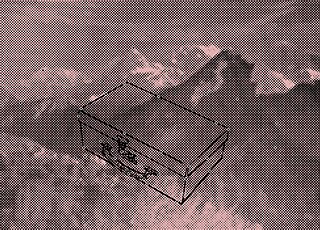
Interactive art is a form of art that involves the spectator in a way that allows the art to achieve its purpose. Some interactive art installations achieve this by letting the observer walk through, over or around them; others ask the artist or the spectators to become part of the artwork in some way.

De Montfort University Leicester (DMU) is a public university in the city of Leicester, England. It was established in accordance with the Further and Higher Education Act in 1992 as a degree awarding body. The name De Montfort University was taken from Simon de Montfort, a 13th-century Earl of Leicester.

Andy Miah is an English bioethicist, academic and journalist. His work often focuses on technology and posthumanism.

Roy Ascott FRSA is a British artist, who works with cybernetics and telematics on an art he calls technoetics by focusing on the impact of digital and telecommunications networks on consciousness. Since the 1960s, Ascott has been a practitioner of interactive computer art, electronic art, cybernetic art and telematic art.

Sue Thomas is an English author. Writing since the late 1980s, she has used both fiction and nonfiction to explore the impact of computers and the internet on everyday life. In recent years her work has focused on the connections between life, nature and technology.
John Young is an electroacoustic music composer born March 4, 1962, in Christchurch, New Zealand, and living in Leicester, UK.
Chris Joseph is British/Canadian multimedia writer and artist who also creates work under the name 'babel'. He was born in Bury St Edmunds, Suffolk and now lives in London.

Mel Alexenberg is an American-Israeli artist, art educator, and writer recognized for his pioneering work exploring the intersections of art, science, technology and digital culture. He created the first digital computer generated painting in 1965, experimental digital fine art prints in the 1980s that are in 30 museum collections worldwide, circumglobal cyberangel flights honoring Rembrandt in 1989 and in 2019.

Paul V Coldwell is an English artist.
Jeffrey Shaw is a visual artist known for being a leading figure in new media art. In a prolific career of widely exhibited and critically acclaimed work, he has pioneered the creative use of digital media technologies in the fields of expanded cinema, interactive art, virtual, augmented and mixed reality, immersive visualization environments, navigable cinematic systems and interactive narrative. Shaw was co-designer of Algie the inflatable pig, which was photographed above Battersea Power Station for the 1977 Pink Floyd album, Animals.

Jeremy Gardiner is a contemporary landscape painter who has been based in the United Kingdom and the United States. His work has been featured in books. It has also been reviewed in The Boston Globe, Miami Herald, The New York Times, and British newspapers including The Guardian and The Observer. He is represented by the Portland Gallery in London.
Andrew Hugill is a British composer, writer and academic. He is both a professor of music and a professor of creative computing. He directs the Creative Computing programme at University of Leicester.

Elaine Shemilt is a British artist and researcher especially known as a fine art printmaker.

Tomohiro Okada (岡田智博) is an interdisciplinary creative and innovation developer, researcher, policymaker, and art curator of contemporary and technology field, Director of Creative Cluster. Since 1995 he has been active in electronic media and creative innovation in Japan especially promoting young talent in new media art, interaction design as a researcher, producer, curator, writer and organizer of numerous creative productions, and policy designs for government and institutions for economic and industry and culture affairs. He has written various policy papers for art and creative and civil development of various local governments and agencies, lectured and held positions at various universities, participated in conferences and symposia, and has worked as a consultant.
George Barber is a British video artist.
Interactive Futures (IF) was a biennial conference and exhibition, hosted in Vancouver, British Columbia, Canada, that explored current tendencies, research and dialogue related to the intersection of technology and art. Interactive Futures included a variety of events such as lectures, workshops, exhibitions, and panels in an effort to provide opportunities for discourse by local, national and international researchers and practitioners.

Ernest Edmonds is a British artist, a pioneer in the field of computer art and its variants, algorithmic art, generative art, interactive art, from the late 1960s to the present. His work is represented in the Victoria and Albert Museum, as part of the National Archive of Computer-Based Art and Design.
Mark Amerika is an American artist, theorist, novelist and professor of Art and Art History at the University of Colorado. He is a graduate of the Literary Arts program at Brown University, where he received his MFA in creative writing in 1997.

Luc Courchesne D.F.A. (1952) is a Canadian artist and academic known for his work in interactive art.
Michael Kempson is an artist, master printmaker, academic and curator. His work is held in collections on Australia. Since 1986 Kempson has taught printmaking, currently at The University of New South Wales. Internationally he is a visiting professor at the Xi’an Academy of Fine Arts in China, and from 2014 to 2016 he was the International Member at Large for Southern Graphics, based in the USA.











